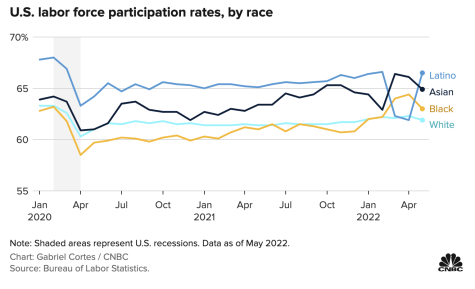The On-Going Issue of Racial Discrimination in the Work Field
Many issues arose and worsened following the events of the spread of COVID-19 and the start of a worldwide pandemic. One of the issues that was caused by this pandemic consists of millions of Americans getting laid off from their jobs due to the decline in the economy.
An article published by The Washington Post, only two days before the nationwide lockdown had officially been announced, stated that, “Airlines, hotels, travel agencies and event companies have all been suffering, but interviews with more than two dozen firms and workers reveal that the pain is now translating into layoffs in a wider circle of industries, including a bakery and a chain restaurant.”

According to the World Economic Forum, the decline in the economic market produced by COVID has caused over 114 million Americans to lose their jobs. When compared to the majority rates in this case, minorities have a harder experience with finding a well-suited job open to them after the nation wide lockdown. This raises the question of how much racial profiling impacts re-employment rates amongst marginalized groups, specifically Hispanic workers.
Antonio Mena, a dedicated worker who immigrated to the states in hopes for a better future for himself
and his family, has been working since he can remember. He worked in many different fields, but mainly focused his work days on agriculture and construction. Mena has made income mostly from companies or individual customers reaching out and asking for assistance from him. Early on in the pandemic, Mena had already begun to notice a decline in business and in offers made for his labor.

“I tried to reach out to different businesses and included my basic information and experience, but I did see a clear shift in responses I would receive,” stated Mena.
This is a clear indicator that re-employment rates dropped amongst migrant workers and people of ethnic backgrounds, which questions just how much this has to do with racial discrimination amongst companies and businesses.
Mena also expressed, “It felt like a twisted joke. A joke that never seemed to end.” Even now, Mena struggles to find the same amount of work offers as before.
Data clearly supports that different demographics have had different experiences during the rising issue of re-employment rates post-COVID. An article made by CNBC found that the participation rate amongst Hispanic women went up from 61.7% and 59% in April of 2022. Across different demographic groups, the overall rate rose to 62.3%. Despite this, re-employment rates seem to be favored against Hispanic workers. The pandemic has allowed for companies to re-choose how they reemploy their workers, and what their demographic of workers consists of.
“I will continue to try to find this same success rate in business as I originally had, but as the months continue, it seems highly unlikely…I do believe this issue is caused by a larger systemic problem in America,” Mena said.
